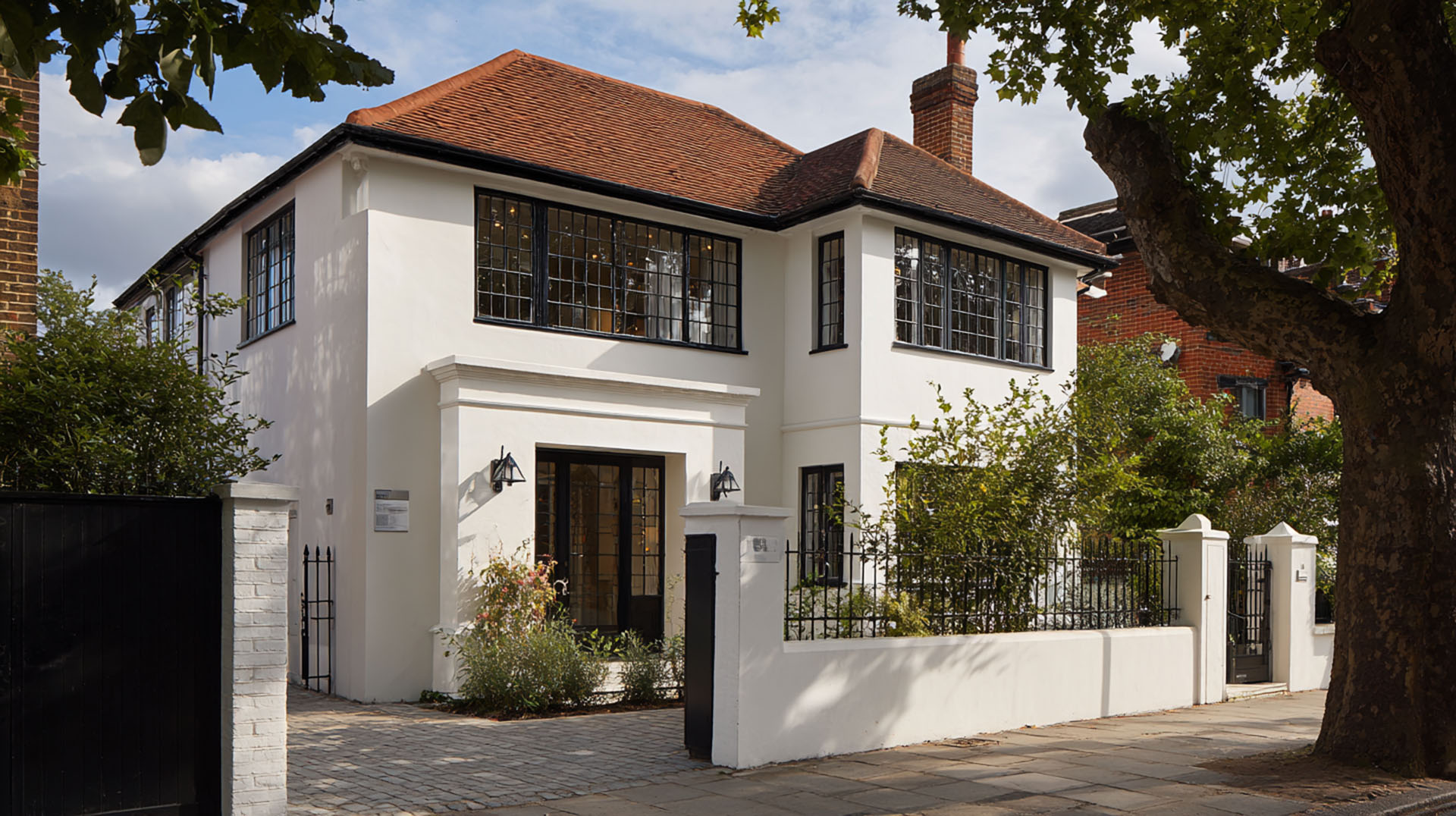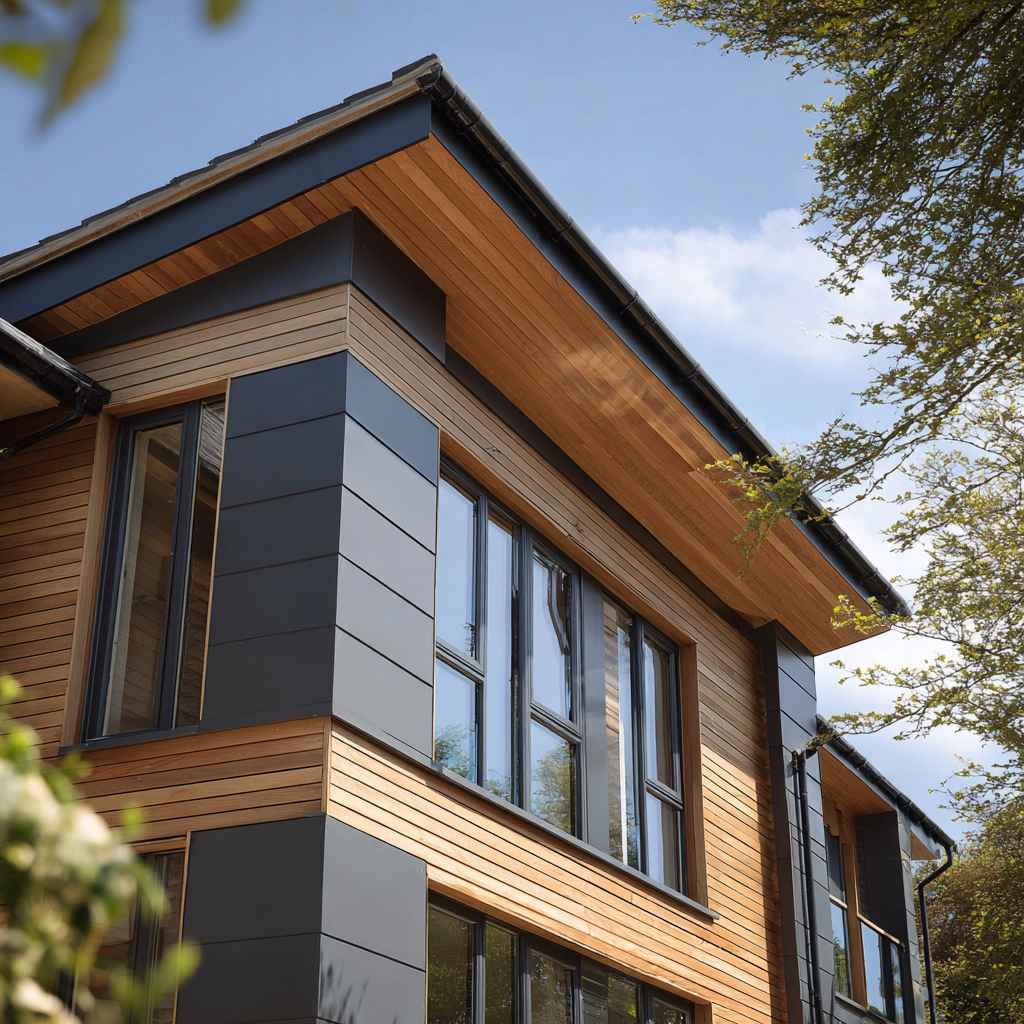Key Take Aways
Silicone render is a modern, thin‑coat exterior wall finish combining high-grade silicone, resins and aggregates to create smooth, through‑coloured facades in just a few millimetres thickness.
Highly weather‑resistant and hydrophobic, it repels rain yet allows trapped moisture to escape, helping prevent damp and algae growth .
Elastic and breathable, it flexes with structural movement (unlike rigid sand/cement renders), reducing cracks and maintaining integrity.
Through‑coloured and UV‑stable, silicone render retains its vibrant shade over years; scratches are less visible since the colour runs through the material.
Low‑maintenance and self‑cleaning, its water‑shedding and nano‑coating properties help surfaces clean themselves, with occasional pressure‑washing recommended.
Simple and quick to apply, available premixed, it can be trowelled or sprayed over a basecoat (often with reinforcement mesh) and textured finish achieved in one go.
More expensive upfront than traditional renders, but its durability, performance and minimal upkeep provide greater long‑term value.
Commonly used on insulated wall systems, silicone render works well over external wall insulation (EWI), including polystyrene, mineral wool and phenolic boards.
Are you sick of seeing the same old, worn-out outside your house whenever you enter or leave? Are you ready to keep your walls dry in the UK? Silicone moulds might be the answer to make your house feel like a home! Reading on will teach you all you need to know about the advantages of silicone rendering system and how our top-notch services can help ensure that your home lasts.
What is Silicone Render?
Silicone plaster is a thin layer of cement that can be put on the outside walls of a building. Silicone and resin are mixed in this rendering type, making it more flexible than standard types like acrylic rendering.
Traditional renders are made from sand, plaster, and lime. They must dry for weeks before being painted to achieve your desired finish. On the other hand, the silicone render systems only require a few hours to dry, which is excellent.
Mould-resistant silicone render is excellent for homes in damp areas prone to wet rot because it keeps water out. This prevents the walls from cracking and gives your home the finished look you want.
Rendering also insulates the walls, making your house more energy efficient and lowering heating bills.

Types of Silicone Rendering system
Here are the popular silicone render methods that people like the most below to help you make the best choice for your home:
- Thorough coloured render—If you use coloured render, you won’t have to add another coat of paint after the base coat is set. We can finish the job faster and for less money this way!
- Mineral silicone render: If you want a more natural look for your home, try this quick-drying cement render. Its mix of rocks gives it a textured finish that looks great in cottages, country homes, and rustic homes.
- Acrylic render: Acrylic render is made of resin, a type of plastic resistant to water and stains. Also, silicone render methods that use acrylic don’t crack easily and leave your walls with a smooth finish.
Benefits of Silicone Rendering System
Lasting Power
The silicone cast is very durable. Silicones make this paint resistant to heat, rain, and snow. The substance lasts up to 25 years, so unlike other materials, you don’t have to apply it every couple of years.
Protection from water
Another benefit of waterproofing walls using silicone renderings supplied by silicone render suppliers near me is that they keep water out of your home and prevent mould growth in areas with poor drainage or weather.
Not affected by UV light
Adding silicones makes silicone UV-resistant. This means it won’t fade or change colour quickly in direct sunshine. This is ideal for sunny homes that must protect their outside walls from UV rays to maintain their appearance.
Thermal Insulation
Combining outdoor wall insulation boards with silicone render gives you a tremendous thermal insulation product. Its airtight barrier over the walls keeps hot air out in summer and warm air in winter, lowering energy expenses and stabilizing your home’s temperature. You also don’t have to build supplementary heating or cooling systems, which may be costly and difficult to repair.
Eco-friendly
The silicone render systems are made from non-toxic natural ingredients. It’s more eco-friendly than oil paints or vinyl siding, which can leach toxic chemicals into soil or groundwater if not correctly disposed of. Silicone renders require little maintenance; therefore, they don’t introduce chemicals into the environment. For example, cleaning solutions used on other surfaces like masonry bricks or stone blocks often contain chemicals that would end up in nearby bodies of water if they weren’t thrown away correctly after use (or even while they were still being applied).
Value for money
Silicone Render is a cost-effective way to cover the outside of your home compared to other options like brickwork veneers or traditional stucco finishes. This is because there are no grouting gaps between the panels that need to be filled before painting can begin. Installing this type of material will require much less labour because only one painting job will be needed, and no extra filling will be required.
Easy to use
Last but not least, silicone renders come in many colours. This helps homeowners customize their homes’ appearances without paying much. Customers don’t have to pay extra for dyeing services if they choose brick veneers because most products are tinted.

For how long does silicone last?
Most of the time, silicone render systems last longer and work better than the old mixes. This is especially true when you mix it with a mineral and a sticky base coat. Because of this, silicone casting usually lasts for 25 to 30 years.
It would help if you also kept in mind that several things can change how long any image lasts. Some of these are where you live, the weather, how well the workers put down the render, and so on. If your old renderer didn’t do an excellent job with the application, it might need to be changed sooner.
Still, many homes in the UK only needed rendering work at least 50 years ago. It would help if you considered it an investment in your home for the long run.
Does silicone render crack?
Silicone is handy and can be used in many ways. Because of this, it is very bendable and won’t crack. Being able to choose from many colours, along with its other unique qualities, has made it a trendy choice among our clients.
If the paint layer underneath cracks, you can see it. However, the silicone finish is very coloured, so the damage to the top layer is less noticeable. When we’ve used silicone render, however, it has never cracked, and if it does, it’s straightforward to fix.
What’s the difference between acrylic render and silicone render?
Cheap acrylic plastic is a beautiful choice for those on a budget. It is also added to render for better stain and water protection and less cracking. Another problem with acrylic render is that it doesn’t move. You can’t use acrylic if you want air to get to the bricks and insulation below.
On the other hand, silicone render lets air flow and last longer than plastic renders. Because of this, it costs more than acrylic render, but silicone render is a better deal when you compare its longevity.
Conclusion
So, how good is silicone turnout? We looked at different parts of silicone render systems and concluded that using it in your home has many benefits. It would help if you considered it an investment in your home, making it worth more over time.







